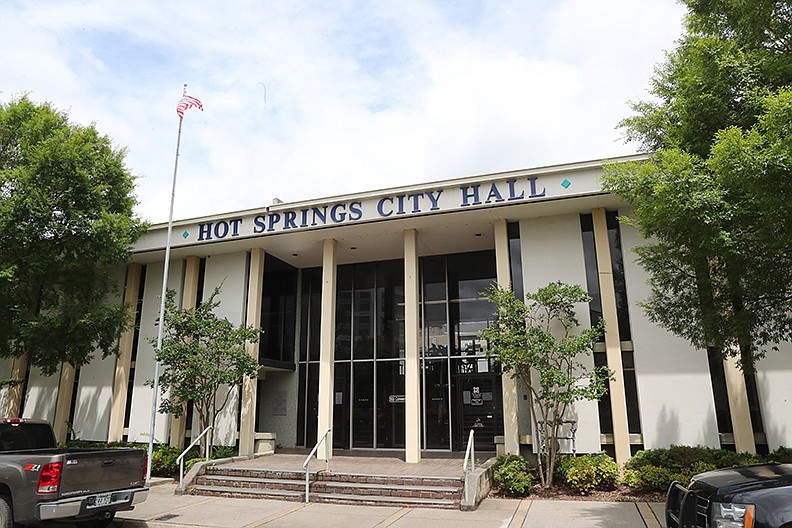A regulatory scheme for fifth-generation, or 5G, wireless technology wasn't urgent when the city began developing rules for placement, appearance and construction of small cell telecommunications facilities in its rights of way three years ago.
The city was fielding few inquiries about requirements for installing the infrastructure underpinning the next generation of wireless technology. Those inquiries have increased in the last three years, prompting the Hot Springs Board of Directors to adopt regulations last week.
The enabling ordinance included an emergency clause that waived the 30-day period before local legislation becomes law.
"They are contacting us to find out what the requirements are, and we would like to be able to tell them what our requirements are," Planning and Development Director Kathy Sellman told the board.
In June 2018, the board established a 120-day moratorium on reviewing requests for installation of small cell facilities, the series of antennas and receiving stations that carry 5G's high frequency, short-range signal. Its faster connection speeds require a denser relay network than what's provided by large cell towers that support existing cellular technology.
That density enables faster internet service needed for the smart cities of the future, but it can also clutter a cityscape if left unregulated.
In October 2018, an ordinance enshrining regulations the Hot Springs Planning Commission developed during the moratorium was pulled from the board's agenda after a Federal Communications Commission order limiting local control was issued a week earlier.
The ordinance the board adopted last week addressed criteria federal rules and the state's Small Wireless Facility Deployment Act of 2019 reserved for local governments.
"We have a preemption from the FCC and state law," City Attorney Brian Albright told the board. "The home rule doesn't apply for us. We have to do what the state said we can do. The aesthetics is about the only thing we can control."
Albright noted most of the primary rights of way, such as Central, Grand and Malvern avenues, in the city are federal and state highways beyond the city's regulatory authority.
The 2019 state law exempts the installation, co-location, maintenance, modification, operation and replacement of small cell facilities from zoning review or approval. It allows local governments to impose reasonable aesthetic standards that can be the basis for denying an application, so long as the denial doesn't prohibit wireless service.
Local governments can require underground installation in areas where it's required for communication and electric lines. In residential zoned areas, municipalities can propose alternate locations within 100 feet of the applicant's proposed location, provided the alternate location doesn't impose technical limits or significant additional costs.
The ordinance the board adopted included the underground installation provision and prohibits above-ground installation within 300 feet of existing small cell infrastructure.
In areas designated as historic districts, state law requires wireless providers to conform to district standards. They can replace decorative poles, so long as the replacement reasonably conforms to the design of the original pole.
"If it's in a historic district, it's going to have to get Historic District Commission approval," Sellman told the board.
The ordinance identified sections of eight rights of way where decorative lighting and poles are standard. They include Central from Market Street to Whittington Avenue, Broadway Street from Market to Malvern Avenue, Bridge Street, Convention Boulevard from Malvern to Laurel Street, Malvern from Spring Street to the city's utility billing services office and Park Avenue from Whittington to Edgewood Street.
An application for use of a decorative pole in those sections requires planning commission approval.
The city said it's developing designs that could be approved on an expedited basis. Sellman told the board permit applications will be reviewed on a one-by-one basis until the list of preapproved designs is completed.
"Any design that doesn't look like the picture will either have to meet the ordinance standard or get the device illustration added to the appendix by amendment or obtain a waiver," Sellman told the board. "We're looking for devices that appear to meet our needs and working with other communities to see what they're doing."
